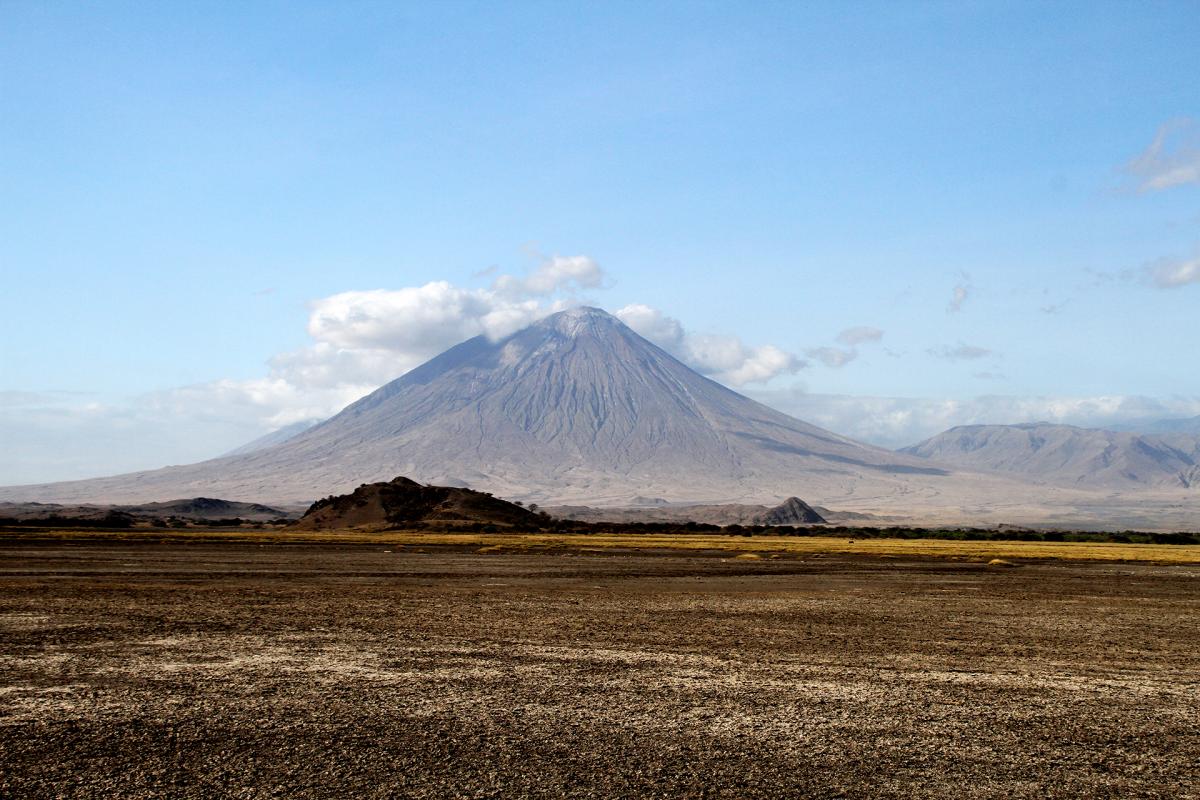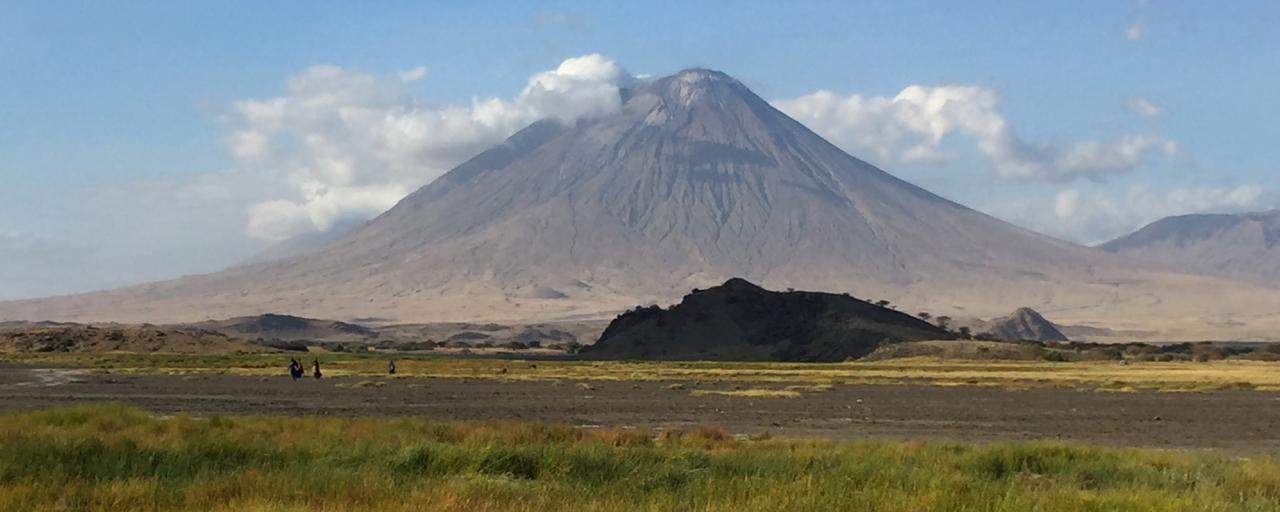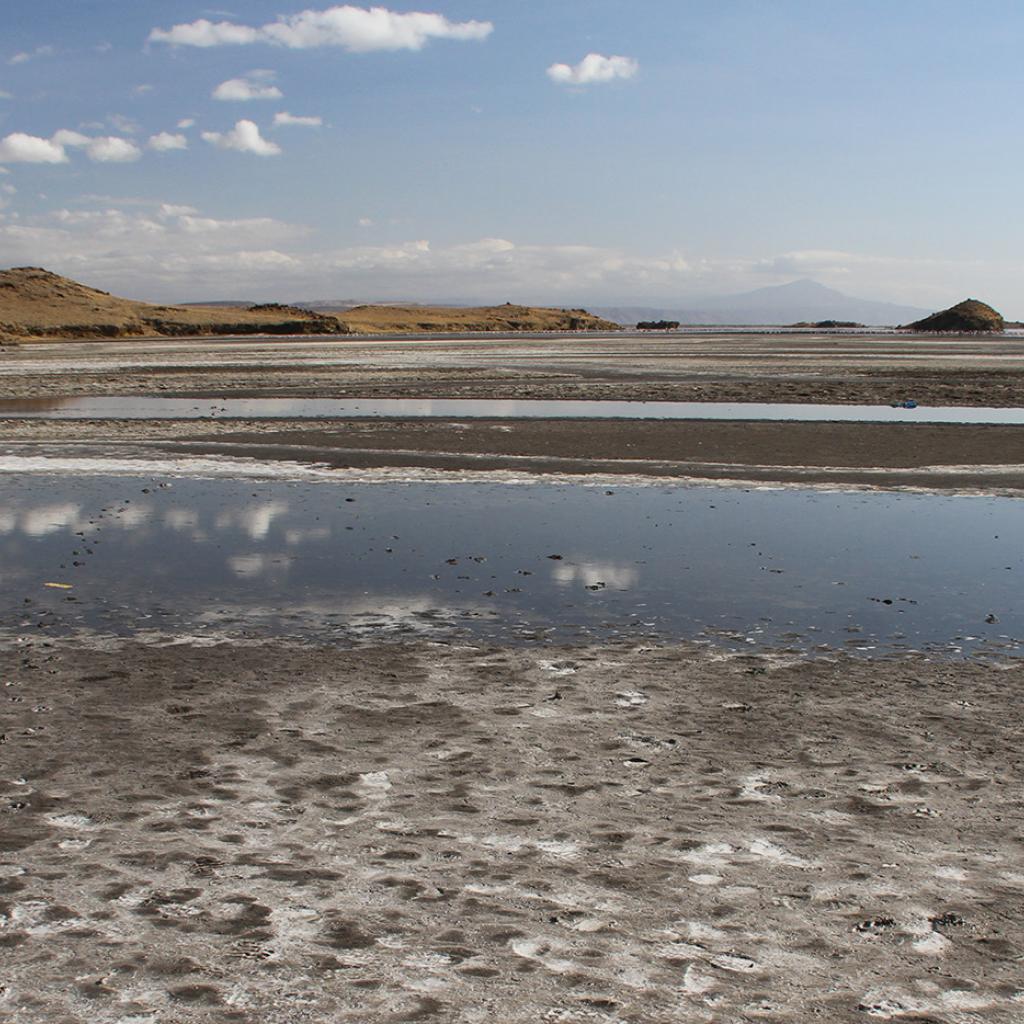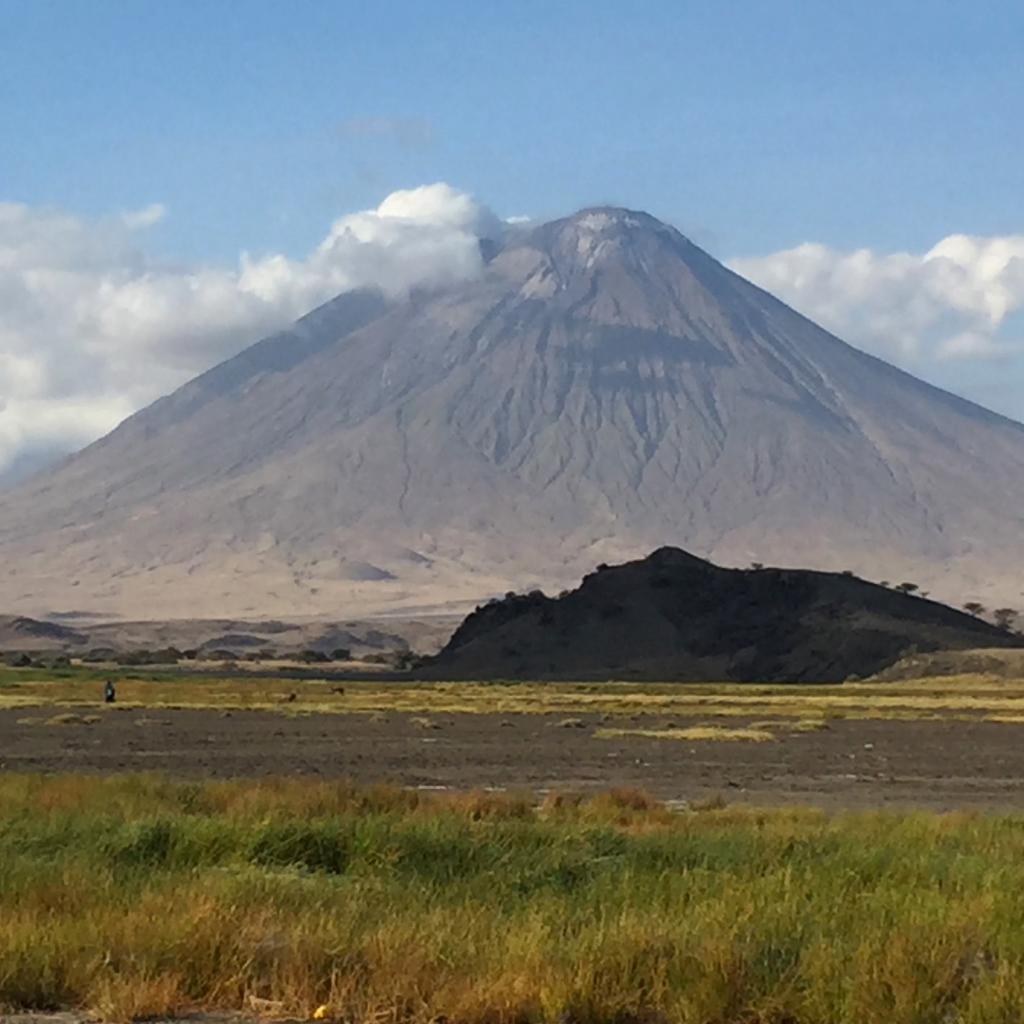This Great Rift Valley volcano is not only a sacred mountain to the Maasai, but it is also characterized by several features making it unique.
First of all, its top looks snow-capped due to the snow-white colored lava it produces; there are no other volcanoes in the world with this characteristic; what’s more, its lava flows look more like they are made of mud than actual lava; finally, it is the only active volcano in the Great Rift Valley.
It serves as a background to the Lake Natron and it happens to be the cause of its alkalinity; the Ol Doinyo Lengai is a volcano rising from the bottom of the Great Rift Valley, reaching 2,886 metres above sea level.
The Lengai is classified as a stratovolcano, this is a generally cone-shaped kind of volcano, built up by several layers of hardened lava.
The Great Rift Valley formed over a million years ago, but the Ol Doinyo Lengai’s formation has been dated back to much more recent times; as a matter of fact, it is estimated it started developing 370,000 years ago.
This section of the Great Rift Valley in Northern Tanzania counts several other volcanoes, however, unlike the Lengai, they are all older and extinct; the most well-known are: the Ngorongoro, the Ketumbeine, the Gelai, the Shombole, the Mosonik and the Kerimasi.
The Ol Doinyo Lengai is venerated by the Maasai, and in maa, their language, it means “Mountain of God”; The Maasai believe that the God Lengai chose its very tip as a home, it is the most sacred place of worship to all the Maasai of Kenya and Tanzania, who reach it to pray and ask for God’s help; they even climb to the top of the volcano bearing offerings to the deity.
The reasons that bring the Maasai to face such a difficult climb are several: sickness, infertility and other misfortunes, such as the loss of some of the livestock; they usually bring a black sheep to offer as a sacrifice, the animal is put into a dry water hole and the Maasai man or woman, who offered it, sings religious songs before going to sleep.
The next morning, when the person wakes up, he or she no longer finds the sheep, that disappeared without leaving any trace behind: neither hoof prints nor remains of bones or skin.
The Maasai who are offering the sacrifice cannot eat until they leave the mountain, while those who simply accompany them say they do not need to eat since they get up and find they are already sated.
Perhaps as they took advantage of the darkness and ate the sheep?
The Maasai believe the God speaks to them when they climb the mountain; they feel the God’s presence and mystery, but they have never seen him and there are no depictions of the deity.
According to a Masai belief, told by the elders in the villages, an evil person cannot climb the mountain because the God will kill him at first.
The mountain is feared by the Maasai because the soil keeps changing in colour, ranging from white to grey, red, brown, black and yellow, this phenomenon is to be attributed to volcanic activity, but in the eyes of a Maasai it is only possible to explain it through the intervention of a deity.
The Maasai are not the only ones who climb the volcano; indeed, everyone can take part in trekking excursions to travel up the mountain’s sides and there are many agencies organizing such excursions.
The cone we see today formed about 15,000 years ago following a series of explosive eruptions of tuffs and pumices and effusive eruptions of lava.
What makes this volcano unique is the fact that, every time it erupts, its lava turns out to be white in colour; in fact, it erupts carbonatite, an unusual igneous rock containing more than 50% of sodium and potassium carbonate minerals, the most common carbonatite is natrocarbonatite.
It is thanks to natrocarbonatite that the Ol Doinyo Lengai’s lava looks white, as soon as it exits the Earth crust it turns dark brown or black, then, due to the minerals it contains and their reaction to water and oxygen in the atmosphere, its colour changes and turns grey or light brown and later white.
The colour change occurs in the span of a few months; the white colour of the lava creates the illusion that the top of the volcano is covered with snow; this tends to remind people of the Kilimanjaro Mountain, at whose tip actually lies a glacier.
It is only possible to observe the white-lava phenomenon on an active volcano, while on extinct volcanos the natrocarbonatite, responsible for it, is not visible anymore; as a matter of fact, being made up of sodium and potassium, it is extremely soluble in water and it has been washed away by rains during the course of centuries.
Another unique feature of this volcano is the lava’s low temperature at eruption, natrocarbonatite becomes fluid at the relatively low temperature of about 600°C, while it takes 1,100°C to make basalt fluid; this makes it so that natrocarbonatite can flow without have to be incandescent.
At least in the sunlight, the Ol Doinyo Lengai’s lava is not incandescent, it is only possible to see the typical glow of a recent flow in the darkness of the night; either way, this glow is darker than that of a basalt flow.
Lastly, this lava has a low viscosity that makes it similar to mud, it acts like water and it rapidly flows downstream, creating river-like lava flows; once cooled, apart from changing colour and becoming white, it alters its own structure, making it similar to dust, it can be found in this state in the underlying plains and on the Natron Lake beaches.





